V-berth remodeling project
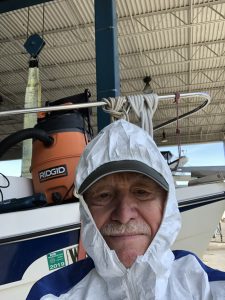
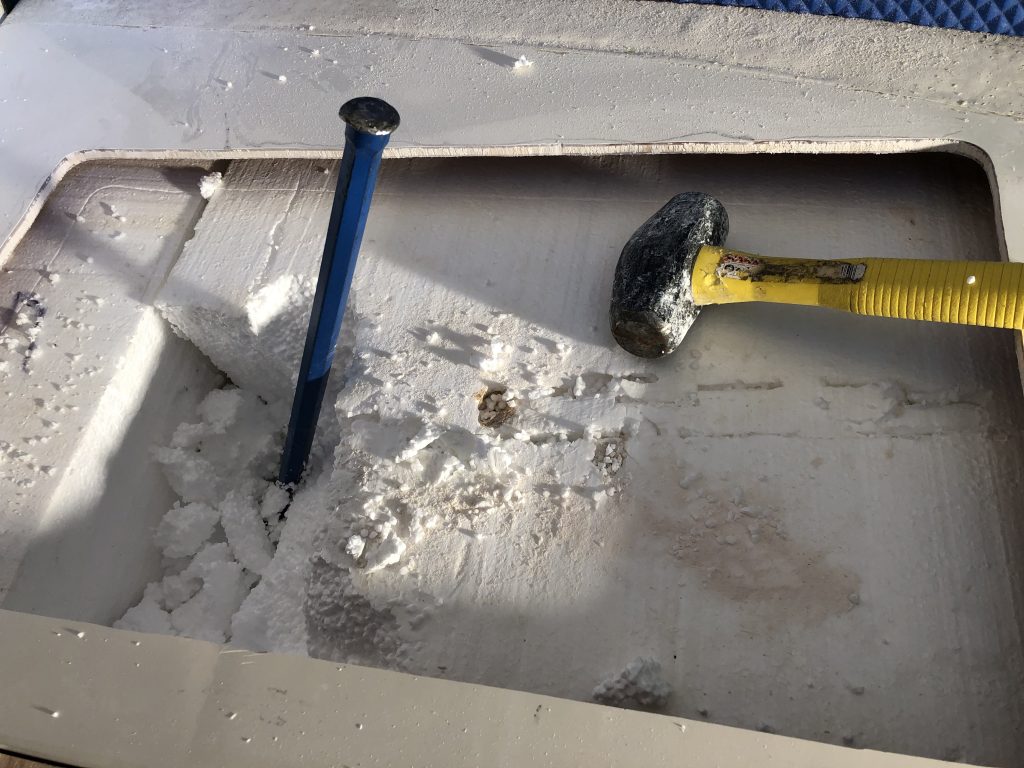
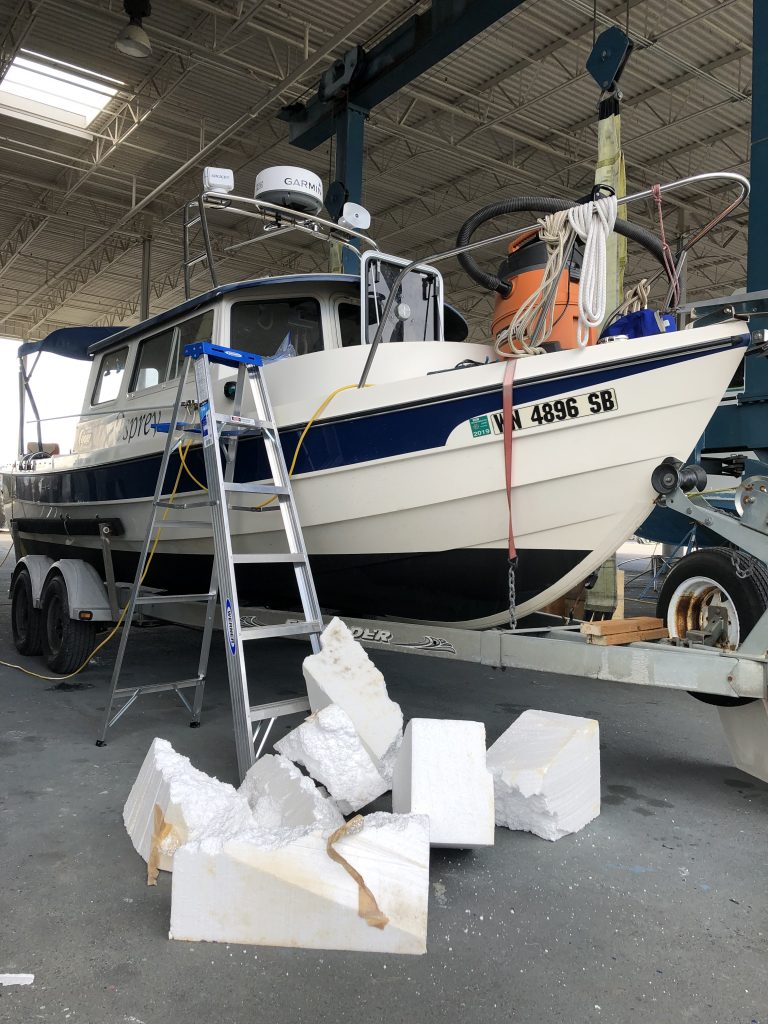
THE C-BRATS WEBSITE, an amazing resource for people interested in these cool little boats, inspired me to renovate my V-berth, to create more storage space for our Alaska trip. Read about this project.
Shakedown trip
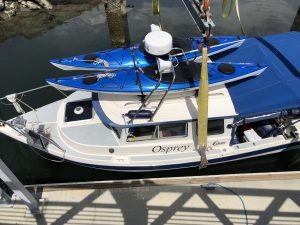
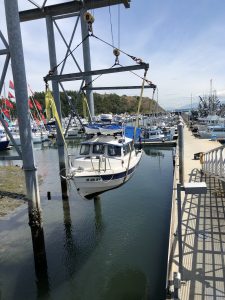
DAVE ORTLAND AND I TOOK OSPREY out this weekend for a shakedown cruise, in preparation for next week’s departure. After stopping by the Eddyline factory in Burlington, where we picked up a pair of new Skylark kayaks, we launched at Anacortes’ Cap Sante Marina. From there, we motored about 20 nautical miles, at 5 knots, to lovely Sucia Island.
With 35-knot winds forecast for that evening, we anchored in little Ewing Cove, just off the beach in 12 feet of water. As usual, the Mantus anchor dug in and held us securely … while the wind howled and Osprey sailed back and forth like a marlin trying to break loose from a fishing line.
One of the main purposes of the trip was to learn what kind of gas mileage we’re likely to get at low speeds. All told, over four days of traveling between the islands — Sucia to San Juan to Stewart to Orcas — we logged about 97 nautical miles at an average GPS speed of 5.5 knots. (I won’t know what kind mileage we got until I gas up, tomorrow.)
Highlights of the trial run were the tranquil and almost empty island anchorages, the way the 12-foot Skylarks performed (stable, nimble and surprisingly fast), and Dave’s marvelous one-pot glop dinners. Yum.
We’re going to have a great trip.
One month to launch
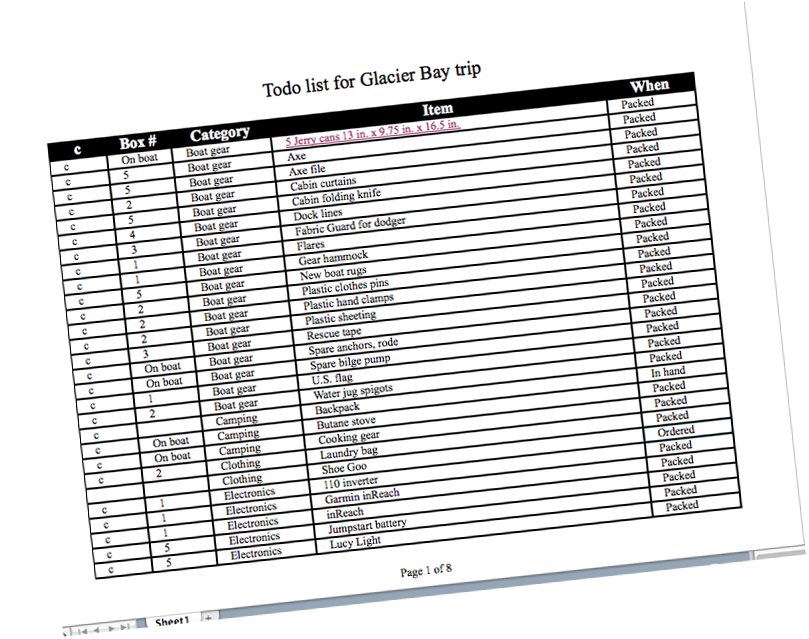
OSPREY’S PACKING LIST HAS GROWN, a lot, since my last post, a month ago.
My buddy Paul looked at the earlier list, and wrote:
“The ToDo list reveals you to be every bit the gearhead I remember, but of course boat ownership does little to discourage that tendency I’ll bet. Anyway, it’s really cool.”
I have been stewing about this, being unjustly labeled a “gearhead.” Like other gearheads, I have always regarded the term as a pejorative. Paul is a psychiatrist, and I think tendencies are things shrinks try to help you get over, right? Like my tendency to stew over perceived slights. Doesn’t “gearhead” sort of imply a tendency toward frivolous acquisition of unnecessary stuff? Are there meds that can help me with that?
Actually, what I think I am is a Boy Scout, with a tendency to obsess about Being Prepared.
There is a website dedicated to C-Dories, and I have been talking with one of the contributors there, Dr. Bob Austin, who has done a number of epic ocean-crossings in sailboats. Bob was an Eagle Scout, and he is way more prepared than I ever will be. The other day I asked him to suggest what tools and spare parts I should take on my trip. He obligingly dashed off the following list. After I added numbering to help me keep track … I saw that Bob had written a beautiful seafaring poem:
Tools and Spares
By Dr. Bob Austen
-
- Generally a set of extra filters for the in line filters (hopefully Racor),
- and the first stage filter under the cowling.
- I tend to always carry a spare water pump impeller, even if you have had it replaced recently — which you should have done within the last year at least.
- I take an extra squeeze bulb,
- extra prop,
- nuts,
- cotter pin,
- thrust washer
- and a prop wrench.
- Also a piece of wood to stabilize the prop if you have to put a lot of leverage on the prop nut (you shouldn’t and
- I would pull the prop, clean and re-grease the shaft and splines.). The newer props don’t often have the fuel pump go out, but on the 25, I do carry an automotive inline fuel pump and small filter to put in front, plus some extra tubing.
- I carry at least 4 quarts of oil and a spare oil filter for the outboard.
- Funnel for filling oil.
- A quart of approved hydraulic fluid and adaptor for the steering pump (or funnel).
- I also carry a quart of lower unit lube, and pump with adaptor if necessary for your motor.
- A set of extra spark plugs.
- I also put a small Jabsco in line water pump — which we used for filling up water filters etc — and a secondary / back up for the whale foot pump. This electric pump has only a stiff momentary push button switch (like a starter switch)
- small and large crescent wrenches.
- A set of open end / Box wrenches in metric and SAE for all size bolts on the boat.
- A basic 1/4″ and 3/8″ drive socket set, metric and SAE. Include spark plug wrench.
- Allen wrenches, metric and SAE.
- Multifunction screw drivers, including Robertson (square) bits in #1 and #2.
- Small and mini screw drivers. I carry one very large screw driver flat head, or Phillips, for the lower unit access ports.
- Needle nose pliers,
- water pump pliers
- a filter wrench.
- I also like “Chain Vise Grips” as well as regular, large and small Vise Grips.
- I do carry a couple of alignment punches,
- a small ball peen hammer,
- a cold chisel (1/2″ size).
- A small SS wire brush (about 1/2″ wide and 8″ long handle)
- Heavy Vinyl electric tape,
- self amalgamating tape
- rescue tape
- Duct tape
- SS seizing wire.
- Small ropes: 1/8″ Dacron line, as well as a spool of net or “bank line).
- Zip ties, small to large
- set of extra hose clamps in every size on the boat.
- A tube of Kwik JB Weld
- and regular JB weld.
- A tube of 3M 4000.
- A patch kit for the inflatable if you have one.
- A set of fast set clear epoxy tubes.
- If you have any thru hulls, then a nerf or wooden plug of the size of the hole, and the orifice of the thru hull.
- One of the Li battery packs which are for starting the engine, powering USB devices etc.
- A multimeter,
- a #14 set of cables with alligator clips,
- a piece of #12 or 14 wire about 20 feet long (enough to bypass to the console.
- I have a good ratchet crimper,
- and an assortment of connectors — heat shrink — adhesive lined, plus the heat shrink adhesive lined tubing.
- Wire stripper/cutter.
- A 30 watt small soldering iron, or a butane soldering iron/torch.
- That is one “pencil case” About 12″ and 4″ wide case with a zipper on the 12″ side made of plastic or ballistic nylon.
- Cigarette or barbecue lighter (better yet the small torch).
- I also carry a multiple speed Dremel tool, with a compete small case of commonly.used bits, including cut off wheels for both metal and plastic, flat and round sanding discs/drums. (also in one of the pencil) cases.
- Know what the fuel burn of your boat is at each RPM and Speed. That way you can plan the longer trips if you don’t have fuel flow meters. (I have put fuel flow meters on all of the C Dorys which I have used for longer trips — but also keep a chart of the fuel flow and range at each RPM handy at the helm. Some of the AK run I have done part at displacement speed–and then when I knew I had enough fuel to make my next fuel stop cranked up the speed. An example of when you may want to crank up speed, is between the slack high water at passes. At displacement speeds, you can usually only make one a day. At C Dory 20 MPH speeds you can make 3 a day. Also the C Dory will do fine on passes as long as not too much of an overfall or whirl pools. I have gone thru some with 10 knot currents. But these were ones I had been thru before and had a good idea about whirlpools or standing waves — overfalls not being a problem.
- Also swing the compass and have a deviation table or card for your compass, with lights and / or electronics off and on. Know your variation for current dates and positions.
- The last few times, I have just taken an Atlas of the area — instead of the several hundred charts I had on the cal 46. I also like the tourist map, which shows the whole inland passage. I still have mine, and had marked the route of each of our trips on it. I believe this is the one I have.. {Fine Edge also makes two “MAPS” one Southern and one Northern. I like either of these to use for planning.
I am sure I have forgotten some items …
… along the Inside Passage …
THE INSIDE PASSAGE (from Wikipedia) “is a coastal route for ships and boats along a network of passages which weave through the islands on the Pacific NW coast of North America. The route extends from southeastern Alaska, in the United States, through western British Columbia, in Canada, to northwestern Washington state, in the United States.
“Ships using the route can avoid some of the bad weather in the open ocean and may visit some of the many isolated communities along the route. The Inside Passage is heavily travelled by cruise ships, freighters, tugs with tows, fishing craft and ships of the Alaska Marine Highway, BC Ferries, and Washington State Ferriessystems.
“The term ‘Inside Passage’ is also often used to refer to the ocean and islands around the passage itself.”
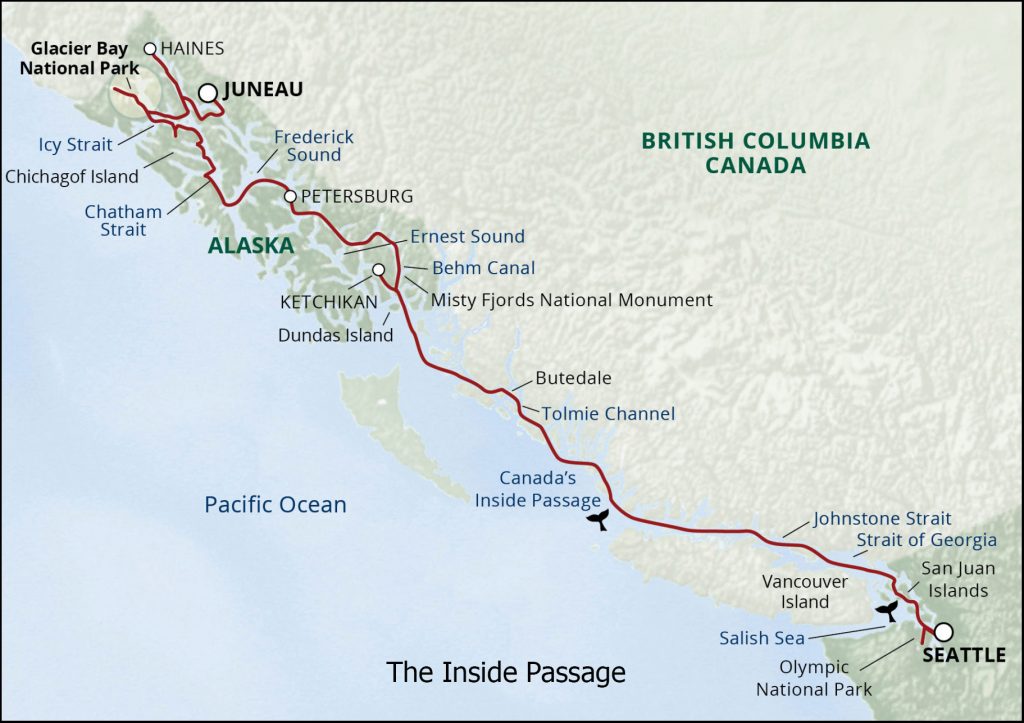
Two months to launch
WITH OUR TRIP SCHEDULED TO START IN TWO MONTHS, we’re busy with last-minute work on the Osprey. The bottom has been coated with anti-fouling paint. Roof rails, which will hold a pair of 12-foot Eddyline Skylark kayaks, have been reseated (bolt holes sealed with butyl tape), and a new Wallas stove installed.
Week after next, the boat will go over to EQ Harbor Service, at Cornet Bay, for some last-minute work, including installing a new Airmar P66 transducer capable of measuring speed through water. Cathy, Carl and Stan have been fantastic to work with, getting Osprey ready for the trip.
Our very partial todo list includes:
- Make appointment for boat maintenance in Ketchikan
- Clean and fill water tank
- Clean sliding window tracks
- Reposition radar reflector
- Food provisioning for trip
- Install new insect screens
- Repairs to window curtains
- Build web page with InReach map (that’s what I’m doing right now!)
- Start a box of materials, e.g. Tohatsu manual, for trip
- Get stern line reel
- Start trip expense ledger
- Install Hypervent under V-berth mattress
- Buy new cabin rugs
- Buy four additional 6-gallon Gerry cans
- Clean, waterproof and re-install camperback
- Measure area under berth for Scepter water containers
- Install new wiper blades
- Lube steering
- Install Airmar P66 transducer (part # 010-10192-21)
- Pick up spares (extra prop, oil filters, impellers, spark plugs, wiper blades, etc.)
- Install new lazarette hatches
- Reset engine maintenance meter
- Review tool kit contents
- Fix starboard gas tank cap chain
… to Glacier Bay, Alaska
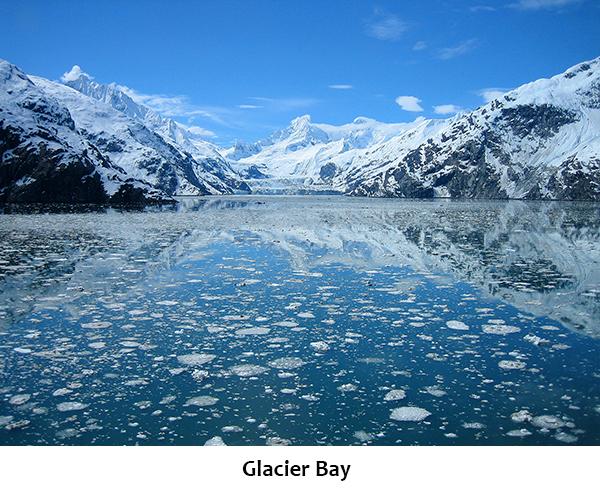
“FROM THE BOTTOM (from the Glacier Bay National Park website) of the deepest glacial fjord to the summit of its highest peak, Glacier Bay encompasses some of our continent's most amazing scenery and wildness. It is a land reborn, a world returning to life, a living lesson in resilience. If ever we needed a place to intrigue and inspire us, this is it.
“Glacier Bay is a homeland, a living laboratory, a national park, a designated wilderness, a biosphere reserve, and a world heritage site. It's a marine park, where great adventure awaits by boating into inlets, coves and hideaway harbors. It's also a land park, with its snow-capped mountains, spectacular glaciers, and emerald–green forests. From the summit to sea, Glacier Bay's wildness is remote, dynamic and intact.”
From Kenmore, Wash …
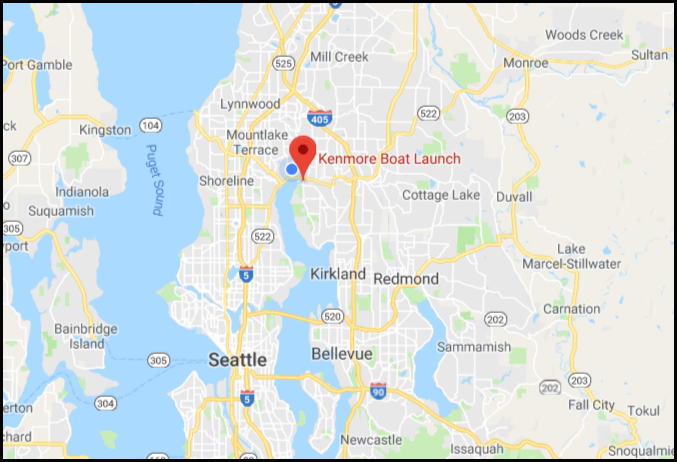
WE’RE LEAVING FROM KENMORE, on the north end of fresh water Lake Washington, bright and early on the morning of May 31, in Osprey, a 22-foot C-Dory Cruiser. Osprey’s skipper Andy Ryan will be joined by four old friends (one at a time, each for about two weeks) on the 3,000-mile journey from Kenmore to spectacular Glacier Bay, Alaska — and back.
For centuries, the Sts’ahp-absh (a subgroup of the Duwamish and Sammamish tribes) lived in winter longhouses at the village of Tl’awh-ah-dees, where the Sammamish River joins Lake Washington. Most tribal members left the Sammamish River region after they were stripped of their lands in the infamous Point Elliott Treaty of 1855.
Non-Indian history in what would become Kenmore progressed rapidly after the acquisition of land by lumber moguls in the 1860s—followed by construction of a mill and settlement by squatters. Until the old growth forests ran out, logging was king here.
Since 1946 the city has been home to Kenmore Air, one of the best-known seaplane operations in the world, with scheduled flights to various locations up and down the Salish Sea. Andy’s wife, former Seattle Times reporter Marla Williams, grew up here. The old bent cedar tree she sat on at Kenmore Elementary School, is still there—bark rubbed smooth over the years by hundreds of little bottoms.
Departure date: May 31, 2019